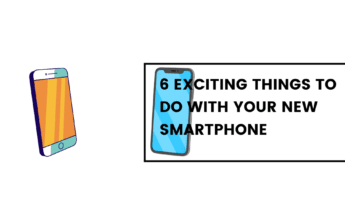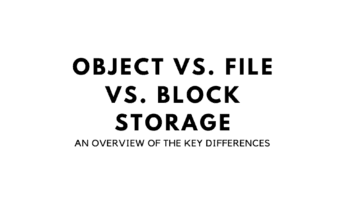Technology is transforming education by offering new tools and opportunities to both students and teachers. It assists students in learning and helps to improve their grades.
Technology is becoming omnipresent in the educational sector, helping students and teachers alike. It makes the studying process more enjoyable, engaging, and more beneficial. If applied correctly, technology can improve the students’ grades.
Using Technology for Learning
Technology assists the educational process in a variety of ways. It makes the classroom experience more engaging. It helps students to visualize the concepts. It can help those who work and study get a necessary certification by taking an online course, for example, medical professionals often get their PALS certification this way. It can be useful outside of the class when doing homework or revising for tests. There are special platforms that offer paper writing services; they become useful when the deadline is close, and you are only ready with an introductory paragraph for your essay.
In other words, these come in handy in a “help me homework is due” situation. In short, no matter the type of education institution a student is attending, he or she can benefit from the correct application of new tools.
The Cloud
Many colleges and universities rely on this type of technology to deliver their services. Storing massive amounts of data in the Cloud means that there is no need to change rooms or laboratories to carry out research-based lessons. Next, teachers mix and match the information stored in the Cloud to enrich their presentations and make learning more interesting for students.
Speaking of the latter, students can also access these research materials. iTunes U from Apple is a digital library of educational podcasts from institutions as different as a small community college or Stanford University. Digital libraries are also at the students’ fingertips. Technology makes learning an evolving and boundless process that is beneficial to students. And when it comes to submitting coursework, the Cloud ensures that students can do it from anywhere in the world.
These aspects have revolutionized the field of education, which is now more accessible, democratic, and open. The two big concerns about cloud computing are the costs and security. Buying and maintaining the cloud space is not cheap. Meanwhile, the entire technology is dependent upon the availability of the Internet.
Augmented Reality
In the past, the only way to go on a field trip was to actually get in the van and travel afar. Biology was all about studying physical models of the human skeleton. Explaining some physical theories was very much like rocket science. AR helps to eliminate all the difficulties that arise when trying to bridge the classroom with the outer world. FlipGrid app helps to create focus groups and shared learning processes. This, first, improves student engagement with each other. It also helps to develop communication skills and learn to carry out group projects.
At the moment, AR is yet to be fully integrated into the learning process at schools. However, a lot of research centers and museums are already using AR-based tools to enrich the visitor experience. For students, this means that a trip to a museum is no longer an ordeal but a fascinating experience that can help gain a better understanding of a school subject.
Artificial Intelligence
AI helps the educational sector by eliminating some of the teachers’ work to let them spend more time with their students. As for the latter, AI is making education and knowledge more accessible. There are translation tools and other applications that allow students to make the most of their learning. One particular group that is going to benefit from AI applications is students with visual and hearing impairments. AI enables technology to identify the knowledge gaps and offers the students tasks for improvement. A lot of game-based apps use AI to identify these gaps.
Biometry
Some may see this kind of technology as an intrusion into a student’s personal space. Yet, it needs not to be such. Some of the student’s reactions to the class material indicate either a strong engagement or its total absence. This may be due to the lack of either knowledge or interest. Teachers used to rely on the physical characteristics of a student’s behavior. But in a class of 30, it is next to impossible to notice everything.
Biometry helps to track and measure student engagement more accurately. The findings can be used to improve the grades. They can also help a student to choose a subject or program that better suits them.
3D-Printed Models
Like AR and AI, this technology is not yet fully accessible for students. Yet, like the other tools, it can seriously improve the educational process. It makes the theory lessons more insightful thanks to the opportunity to study a physical model of a process or organ. As for practical lessons, here, students create 3D prototypes. Such exercises significantly improve student engagement and their understanding of the subject.
Gamification
To many people, this derivative of the word “game” sounds like a mockery of the educational process. Far from it, gamification fosters healthy competition in the class. As coursework is assessed by computers, it leaves no room for the teacher’s bias. Thus, students can freely compete against each other. This means that each student receives grades according to his or her individual characteristics. When they compare themselves to other students, they can see what areas of their own work need improvement. They can then ask teachers for help – or turn to better-performing students for advice.
On the other hand, as we accept this today, learning should be fun. For example, a Prodigy app contains a galore of Math tasks for students of Grades 1-8. While students enjoy different games and activities, teachers observe what skills need improving.
Conclusion
It is true that technology reduces personal interactions between students and teachers. This, and the unreliability of the Internet, have been regarded as the main drawbacks of technology in education. However, the benefits of using technology in the educational sector far outweigh the disadvantages. Rather than disintegrating the learning process, it helps to improve it by making education accessible to any student regardless of their country, age, or health condition. It also fosters healthy competition in the classroom and provides wider opportunities for learning and teaching. By learning to use technology to their advantage, students of both colleges and universities can improve their grades and career prospects.







